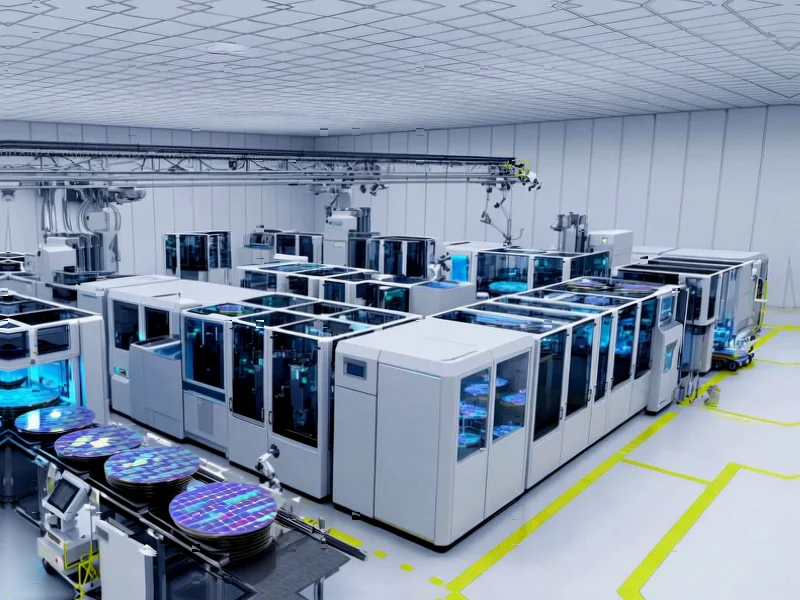According to CNBC, OpenAI has signed a landmark $38 billion compute agreement with Amazon Web Services that will immediately begin running workloads on AWS infrastructure. The deal, announced on Monday, provides OpenAI with access to hundreds of thousands of Nvidia’s graphics processing units in the U.S., with plans to expand capacity in the coming years. Amazon stock climbed about 5% following the news, reflecting investor confidence in the partnership. AWS vice president Dave Brown confirmed that the arrangement involves “completely separate capacity” with some already available for OpenAI’s immediate use, while Amazon will eventually build additional infrastructure specifically for the AI company. This partnership marks OpenAI’s first major cloud alliance beyond its existing Microsoft relationship, signaling a strategic diversification in its infrastructure approach.
The Cloud Wars Intensify
This deal fundamentally reshapes the competitive dynamics in the cloud AI infrastructure market. While Microsoft has been OpenAI’s primary cloud partner through its multi-billion dollar investment, this AWS partnership demonstrates that OpenAI is deliberately diversifying its infrastructure dependencies. For Amazon, securing OpenAI as a major customer represents a crucial victory in the battle for AI supremacy, potentially positioning AWS as the infrastructure backbone for the next generation of AI models. The immediate 5% stock bump for Amazon reflects how investors view this as validation of AWS’s competitive positioning against Microsoft Azure and Google Cloud in the AI race.
GPU Supply Chain Implications
The scale of this deal—involving “hundreds of thousands” of Nvidia GPUs—creates significant ripple effects across the semiconductor and data center markets. Nvidia stands to benefit enormously, as this represents one of the largest single commitments to its hardware ecosystem. However, the deal also highlights the ongoing GPU scarcity issues that have plagued the AI industry, with OpenAI essentially securing preferential access to critical compute resources that smaller competitors may struggle to obtain. This could accelerate the development of alternative AI chips from companies like AMD and Intel, as well as custom silicon efforts from cloud providers themselves, as the industry seeks to reduce its dependence on Nvidia’s dominant position.
OpenAI’s Strategic Infrastructure Shift
OpenAI’s decision to partner with AWS represents a sophisticated multi-cloud strategy that reduces its operational risk and increases negotiating leverage. By not being exclusively tied to Microsoft’s infrastructure, OpenAI maintains flexibility in deployment options and cost management. This approach mirrors strategies employed by other large-scale technology companies that distribute workloads across multiple cloud providers to optimize performance, cost, and redundancy. The arrangement also suggests that OpenAI’s compute needs have grown beyond what any single provider can comfortably accommodate, indicating the staggering scale requirements for training and running next-generation AI models.
Broader Market Consequences
For enterprise customers and AI startups, this partnership creates both opportunities and challenges. The validation of multi-cloud AI deployments could encourage more companies to adopt similar strategies, potentially leading to more competitive pricing and service offerings from cloud providers. However, the massive scale of this deal could also tighten GPU availability for smaller players, potentially creating a two-tier market where well-funded organizations secure preferential access to critical resources. As AWS expands its AI infrastructure to accommodate OpenAI’s needs, the resulting innovations in scale and efficiency may eventually benefit the broader ecosystem, but in the near term, resource constraints could intensify.
The Road Ahead
This partnership likely represents just the beginning of a broader realignment in the AI infrastructure landscape. We can expect to see similar large-scale deals between other AI leaders and cloud providers, as well as potential responses from Microsoft and Google to maintain their competitive positions. The $38 billion commitment also signals that the cost of staying at the forefront of AI development is escalating dramatically, potentially consolidating power among a handful of well-funded players. As these infrastructure alliances solidify, the focus will shift to how these partnerships influence the development trajectory of AI capabilities and the competitive dynamics that will shape the industry for years to come.




